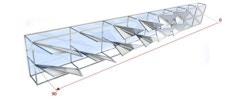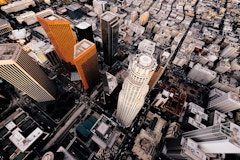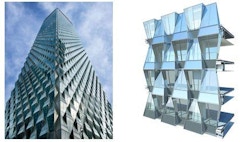
Kinetic Shading Systems
This study focuses on experiments in kinetics and architectural skins. More extensively, it introduces a solution for environmental design issues and

This study focuses on experiments in kinetics and architectural skins. More extensively, it introduces a solution for environmental design issues and

Today, about 40% of all buildings in the U.S. still have single-pane windows, and ~70% of the existing building stock is estimated to suffer from



Due to the increasing concerns surrounding the coronavirus (COVID-19) in the Los Angeles area, the Facade Tectonics Institute has made the very difficult decision to postpone Facades Week: LA! until August 3-7, 2020 with the World Congress to be held August 5-6.

Metal-framed glazed enclosures define contemporary architecture. But as our 20th century building stock continues to age, the restoration, rehabilitation and replacement of underperforming facades has created a specialized field of physicists and preservationists.

The age-old trend of more and larger lites of glass in the building skin dates back to the Roman Empire. Despite the challenges of highly glazed facades, it appears we just can’t get enough. Is there a “beyond” glass? If so, what does it look like?

Get inspired at FTI's Educational Workshop Series, presented virtually as part of the 2020 World Congress. Choose from nine workshops presented across three sessions to learn about the latest advancements and trends in facades from experts in the industry.
Small towns are dying, and it is not just because of their dwindling economies. The physical fabric of our communities is literally crumbling. A

To paraphrase Robert le Ricolias, the art of the structure is where to put the folds. Using that inspiration, fundamental concepts from origami,

FTI’s Mic Patterson will be interviewing industry thought leaders on wide-ranging topics relating to buildings and their skins. Upcoming episodes will feature conversations on Passive House, tall buildings and the work the DOE is doing with windows and facades.

I recently started studying Sustainable Environmental Systems at Pratt Institute. One of my classes focused on climate change and its social effects across the world. I started to connect the dots backward and question the impact of our work in facades and fenestration on our local communities.

Driven by an increasing demand for high thermal and acoustic performance, transparency, and low maintenance costs, a number of facade innovations